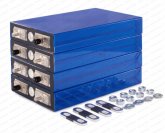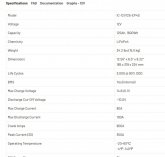Fish Freak
I fish frequently
For those of you that have test equipment, can you tell me the how's and why for certain configurations? I'm making 125Ah 12v lead replacement lithiums for marine use and leaning towards the configuration manufacturers use like that Ionic just because they know more than I do.
For instance, what configuration is 'better'; using 4 3.2v 125Ah cells in a 4S=125Ah or using 20 3.2v 25Ah cells in a 5P4S=125Ah layout? Which one could deliver higher C output? Does it matter?
Advantages? Cost is similar. Redundancy - if one 25Ah cell dies, the pack will still work. How often do cells die when they're very well maintained and monitored?
Disadvantages? Complexity? Weight of the 20 cells is several lbs heaver than 4 - important to me with a boat application.
Obviously the BMS-wise config would be totally different. On the first pic, 5P4S, would you monitor each of the 20 cells separately or just the 4 parallel banks?
Pics:

or:

For instance, what configuration is 'better'; using 4 3.2v 125Ah cells in a 4S=125Ah or using 20 3.2v 25Ah cells in a 5P4S=125Ah layout? Which one could deliver higher C output? Does it matter?
Advantages? Cost is similar. Redundancy - if one 25Ah cell dies, the pack will still work. How often do cells die when they're very well maintained and monitored?
Disadvantages? Complexity? Weight of the 20 cells is several lbs heaver than 4 - important to me with a boat application.
Obviously the BMS-wise config would be totally different. On the first pic, 5P4S, would you monitor each of the 20 cells separately or just the 4 parallel banks?
Pics:

or:




